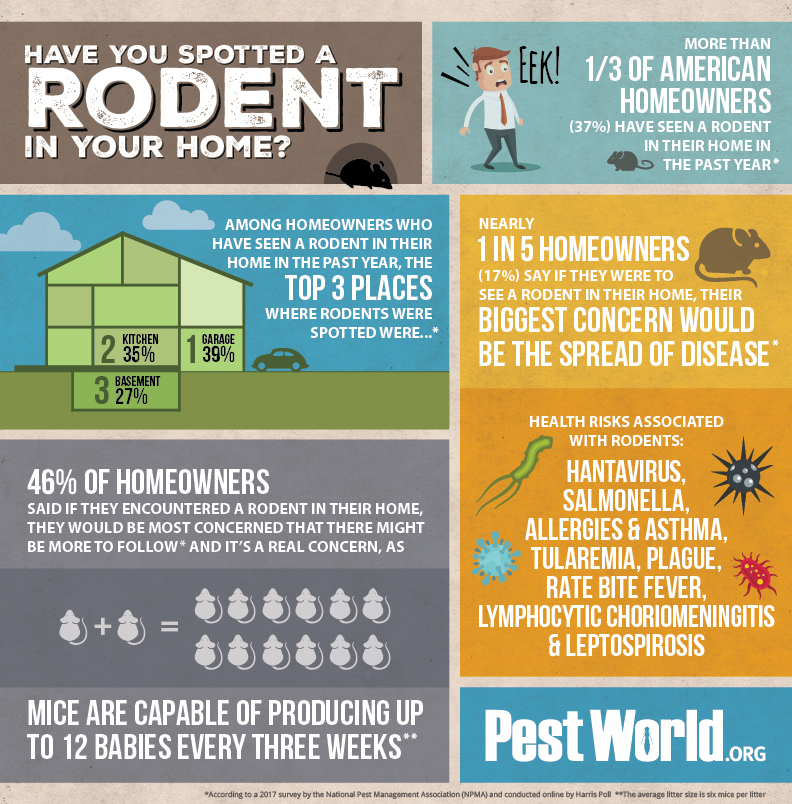Handling Rat Infestations: Insights Right Into Rodent Psychology
Handling Rat Infestations: Insights Right Into Rodent Psychology
Blog Article
Content Author-David Alston
When it concerns rodent control, understanding typical rodent behavior is crucial to efficiently managing infestations. Did you understand that rats have some interesting nesting habits that might stun you? By exploring their complex behaviors, you can obtain important insights right into exactly how to tackle rodent issues in an extra critical and efficient way. So, allow's unwind the enigmas behind these creatures' actions and find out just how to outsmart them in your rodent control efforts.
Rat Nesting Habits
When observing rodents in their natural environment, you'll observe that they actively choose products to create their nests. Rodents, such as computer mice and rats, are resourceful animals that use a selection of things like twigs, leaves, paper, and fabric to develop their homes. They're careful in their nest-building procedure, often lining their nests with softer products like hair or plumes to produce a comfortable setting.
Rats like to construct their nests in surprise and safe and secure locations to secure themselves and their young from killers. Common nesting areas consist of wall surface tooth cavities, attics, cellars, and also within insulation materials. By building their nests in these private locations, rats can securely raise their children far from prospective risks.
It is important to recognize the nesting behaviors of rats when carrying out control measures. By interrupting their nests or getting rid of materials, you can inhibit rodents from developing a visibility in your home or property. Appropriate sanitation and sealing off entrance factors are additionally important steps in preventing rodent invasions.
Rodent Feeding Patterns
After observing rodents' nesting routines, it becomes apparent that their feeding patterns play an essential function in their lives and behaviors. Rats, consisting of mice and rats, are opportunistic feeders, indicating they'll consume whatever food resource is conveniently offered. They're largely nocturnal creatures, liking to forage for food during the cover of evening to stay clear of predators.
Rats have a varied diet plan, ranging from grains, seeds, fruits, and vegetables to bugs, nuts, and also tiny pets. This flexibility in their food selections enables them to flourish in various environments, including urban locations where human food sources are bountiful.
Their feeding patterns aren't only driven by cravings but likewise by the requirement to stockpile food for times of scarcity. https://urbanmatter.com/effective-pest-control-strategies-for-colorado-springs-residents/ is specifically visible in preparation for winter season or when nesting. Rodents are known to hoard food in their nests or burrows, ensuring a constant food supply. Recognizing their feeding patterns is important in applying effective rodent control procedures to interrupt their food sources and avoid infestations.
Rat Motion and Traveling
Rodents browse their environments with dexterity and stealth, using their keen detects to move swiftly with their settings. These animals are skilled mountain climbers, able to range walls and upright surfaces easily. They can likewise press via surprisingly small openings, making it important to seal any type of possible entrance points in your home.
When it comes to traveling, rats often tend to adhere to acquainted courses, developing routes along walls or skirting the edges of rooms. They're creatures of habit, typically sticking to these developed courses as they forage for food or discover their environments.
Rodents are recognized for their nocturnal habits, so you may hear them hurrying around in the evening as they look for food and water. Their movements are quick and erratic, enabling them to dart in and out of view in the blink of an eye.
Comprehending just how rats move and take a trip can aid you determine possible invasion locations in your home and take aggressive actions to prevent these insects from getting a footing.
Verdict
As you function to regulate rats in your home, bear in mind that understanding their habits is key. By acknowledging their nesting practices, feeding patterns, and motion, you can properly prevent infestations.
Together, by taking proactive measures to eliminate food sources and seal entry points, you can disrupt their acquainted courses and require them to seek out brand-new locations, inevitably lowering the probability of rodent presence in your space.
